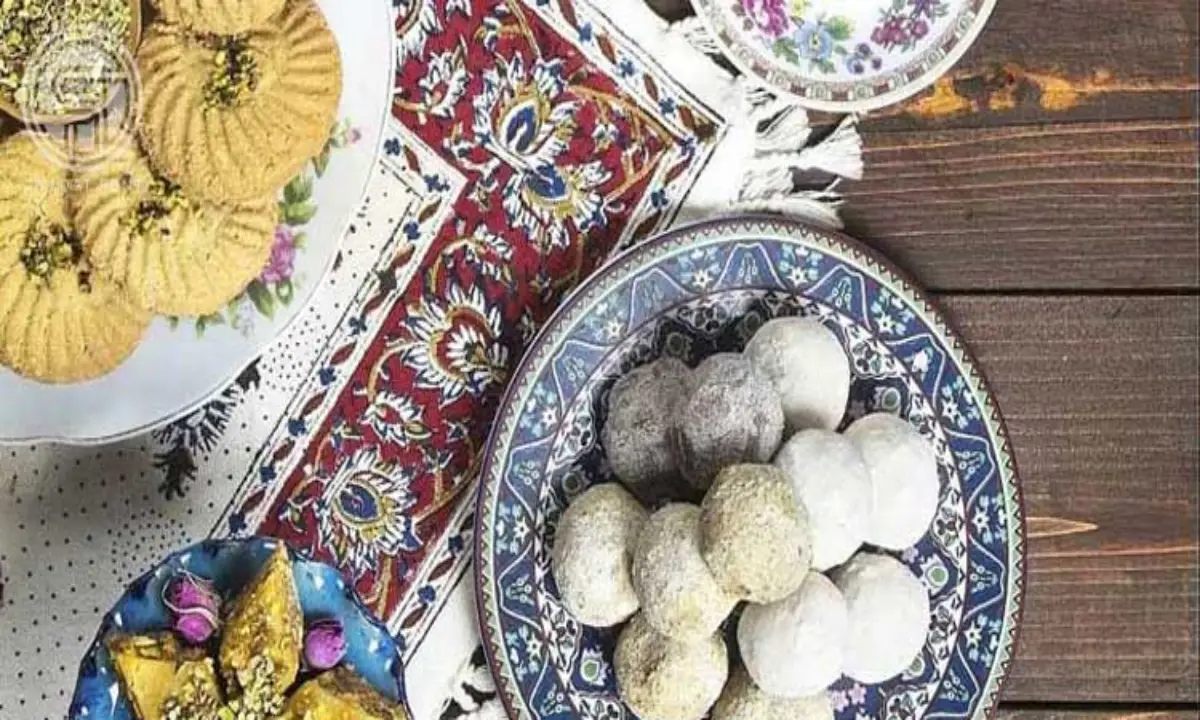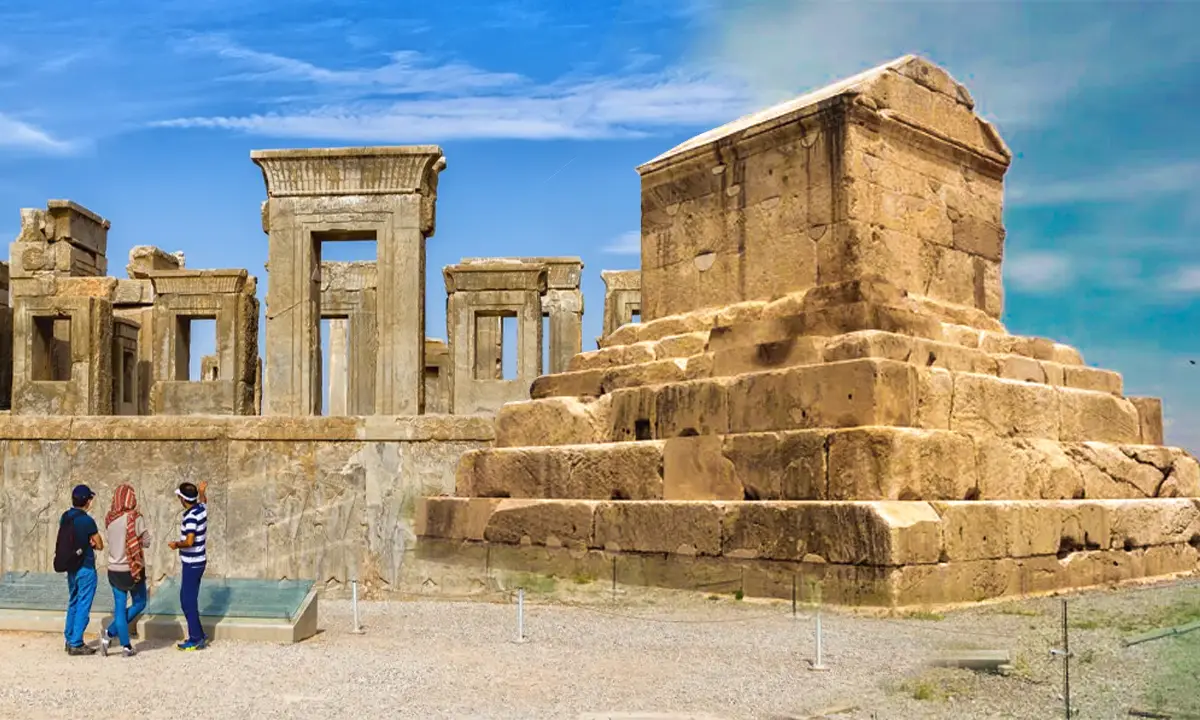souvenirs and handicrafts; what to buy in Yazd?
![]() Author : asal | Date : Wednesday 16 July 2025 13:54
Author : asal | Date : Wednesday 16 July 2025 13:54
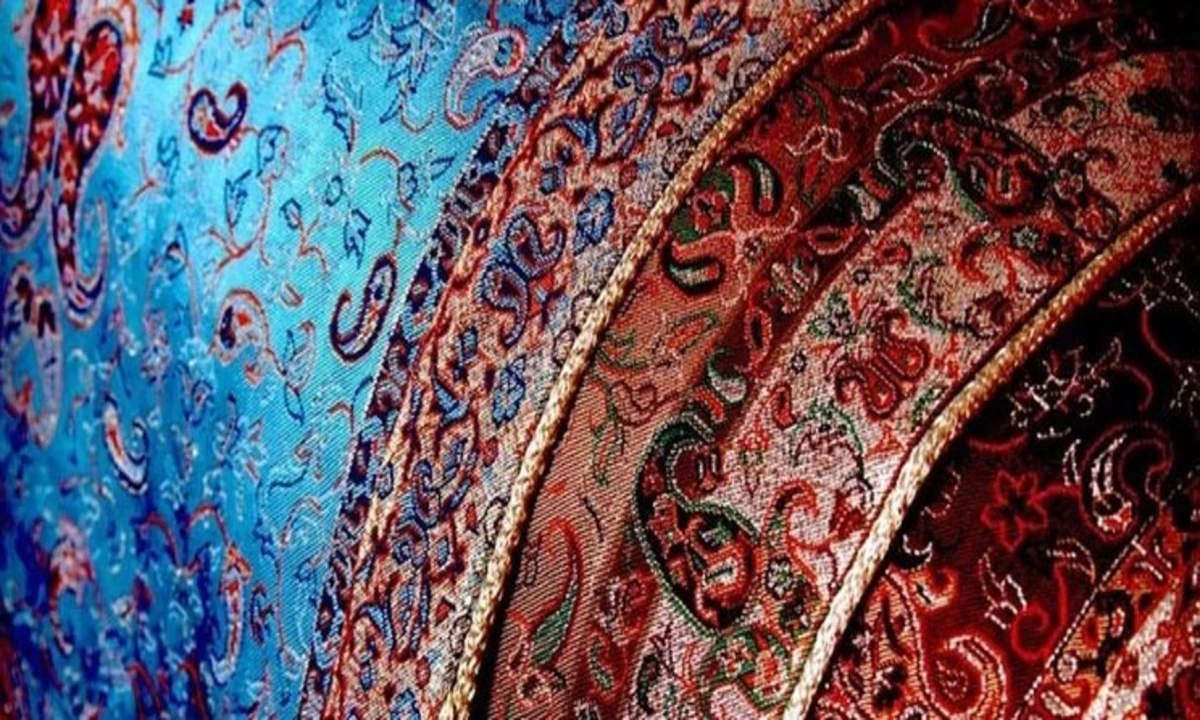
Yazd offers a delightful array of souvenirs and handicrafts that reflect the city's rich cultural heritage and traditional craftsmanship. When visiting Yazd, you can consider purchasing these unique items as keepsakes or gifts:
- Termeh Textiles
- Persian Carpets and Rugs
- Silk and Velvet Fabrics
- Pottery and Ceramics
- Golab (Rose Water)
- Copperware
- Traditional Textiles
- Enamelware
- Ghotab and Yazdi Sweets
- Miniature Paintings
- Jewelry
- Woodwork
- Khatamkari
- Zoroastrian Symbols
Termeh Textiles in Yazd: A Persian Artistry
Termeh is a classic handwoven cloth known for its complex patterns and bright colors. It has a unique place in Persian culture, especially in locations like Yazd, where talented artisans have perfected the trade of creating these gorgeous fabrics.
Art of Termeh Weaving:
- Termeh weaving is a labor-intensive craft that involves intricate patterns and designs.
- Skilled weavers use silk, wool, and sometimes gold or silver threads to create Termeh textiles.
- The weaving process is meticulous, with each thread carefully selected and woven by hand to achieve the desired patterns.
Historical Significance:
- Termeh textiles have a rich history in Persian culture, dating back centuries.
- These textiles were traditionally used for various purposes, including clothing, tablecloths, and decorative items.
- Termeh was highly regarded among Persian nobility and played a role in royal attire and interior decoration.
Traditional Designs:
- Termeh patterns often feature geometric shapes, paisley motifs, and intricate floral designs.
- Different regions of Iran have their own unique Termeh designs, each reflecting the local culture and artistic traditions.
Modern Applications:
- Today, Termeh textiles are cherished as works of art and are often used for decorative purposes, such as wall hangings and table runners.
- They are also incorporated into contemporary fashion, with Termeh scarves and clothing items being sought after for their elegance and cultural significance.
Yazd's Role in Termeh Production:
- Yazd is one of the prominent centers for Termeh production in Iran.
- The city is home to skilled weavers and workshops that continue the tradition of crafting these beautiful textiles.
- Visitors to Yazd can explore Termeh shops and witness the artistry behind these creations.
Whether as a souvenir or a piece of art, Termeh textiles from Yazd are a testament to this ancient city's enduring craftsmanship and cultural heritage.
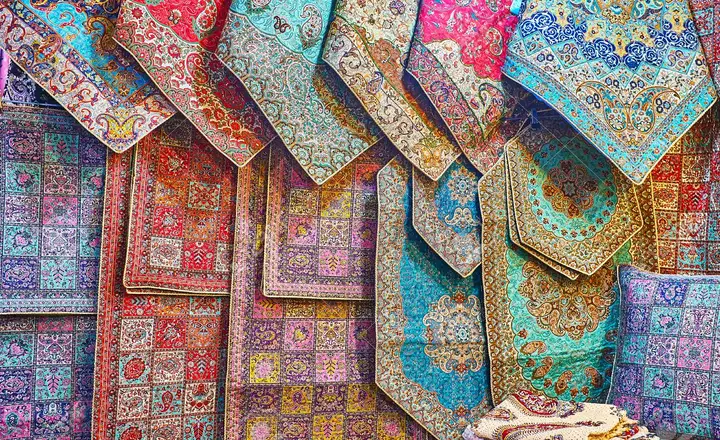
Persian Carpets and Rugs in Yazd: A Tradition of Excellence
Persian carpets and rugs are well-known for their fine craftsmanship, elaborate patterns, and rich cultural heritage. Yazd's carpet-weaving heritage is strongly established in the local culture, and the city is known for creating some of the best Persian carpets and rugs. Here are some important insights regarding this valued tradition:
Yazd's Role in Persian Carpet Production:
- Yazd is one of Iran's prominent centers for carpet weaving, known for producing high-quality Persian carpets.
- The city's geographic location and historical significance have contributed to its prominence in the carpet industry.
Artistry and Craftsmanship:
- Persian carpets are handwoven, and each piece is a labor of love, taking months or even years to complete.
- Skilled artisans in Yazd use traditional techniques passed down through generations.
- The carpets are crafted using fine materials such as wool, silk, or a blend of both, resulting in luxurious textures and intricate patterns.
Design Diversity:
- Yazd carpets exhibit a wide range of designs, including floral motifs, geometric patterns, medallions, and pictorial representations.
- The choice of design often reflects the weaver's artistic expression, regional influences, and cultural inspirations.
Cultural Significance:
- Persian carpets and rugs are more than just decorative items; they are woven with cultural stories and symbolism.
- Many Yazd carpets feature traditional Persian symbols, historical narratives, or interpretations of nature and spirituality.
Varieties and Sizes:
- Carpets and rugs from Yazd come in various sizes, from small area rugs to large room-sized carpets.
- Different types, such as Kerman, Isfahan, or Yazd carpets, each have their distinct styles and characteristics.
Modern and Timeless Appeal:
- Yazd's carpets are highly sought after by collectors and enthusiasts worldwide for their enduring quality and timeless beauty.
- These carpets make exquisite additions to home decor, adding warmth, color, and cultural depth to living spaces.
Souvenirs and Investments:
- When visiting Yazd, travelers often consider purchasing Persian carpets and rugs as souvenirs or investments.
- Authentic Yazd carpets are available in local markets, carpet shops, and weaving workshops.
Persian carpets and rugs from Yazd represent a fusion of art, history, and craftsmanship. They continue to be cherished as both functional items and treasured works of art that tell the story of this ancient city's enduring cultural heritage.
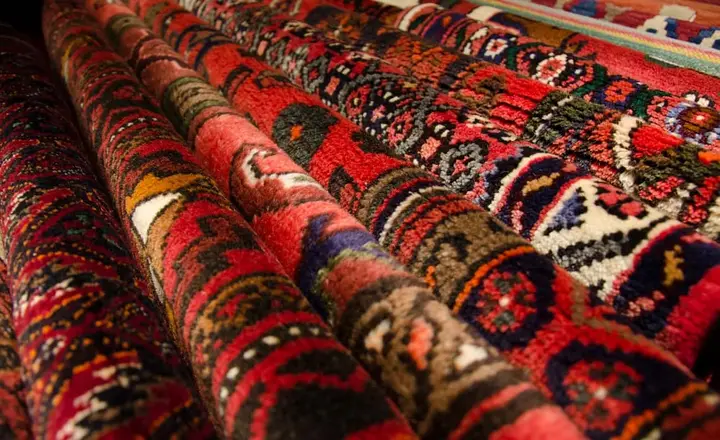
Silk and Velvet Fabrics in Yazd: A Testament to Luxury and Elegance
Yazd has a longstanding tradition of producing high-quality silk and velvet textiles, which are synonymous with luxury, sophistication, and the rich cultural heritage of Iran. These fabrics are not only for their opulence but also for their historical significance. Here's a closer look:
Silk and Velvet Weaving Expertise:
- Yazd is renowned for its skilled artisans who specialize in weaving silk and velvet fabrics.
- These craftsmen and craftswomen have honed their skills over generations, ensuring the highest level of quality.
Silk Fabric Elegance:
- Silk fabrics produced in Yazd are celebrated for their lustrous appearance, soft texture, and natural sheen.
- Silk threads are obtained from silkworms and are meticulously woven to create a variety of textiles, from delicate scarves to luxurious clothing.
Velvet Fabric Opulence:
- Velvet is another specialty of Yazd, known for its plush and velvety surface.
- Velvet fabrics are characterized by their short, dense pile, which gives them a unique tactile quality.
Historical Significance:
- Silk and velvet fabrics have played a significant role in Persian culture and history, adorning the clothing of nobility and royalty for centuries.
- Yazd's tradition of silk and velvet production is deeply intertwined with Iran's rich past.
Traditional Patterns and Designs:
- Yazd's silk and velvet fabrics often feature intricate Persian designs, including floral motifs, arabesques, and geometric patterns.
- These designs reflect the region's cultural influences and artistic expressions.
Modern Applications:
- Today, Yazd's silk and velvet fabrics are used in a variety of applications, including women's clothing, scarves, shawls, and decorative textiles.
- They are favored for their luxurious look and feel, making them ideal for special occasions and high-end fashion.
Souvenirs and Gifts:
- When visiting Yazd, travelers typically seek out silk and velvet items as unique souvenirs or exquisite gifts.
- Yazd's markets and specialty shops offer a wide selection of these fabrics in various forms.
Silk and velvet fabrics from Yazd represent the epitome of elegance and craftsmanship. They are a testament to the city's enduring commitment to producing textiles of the highest quality, which have been cherished both within Iran and beyond its borders for their beauty and cultural significance.
Pottery and Ceramics in Yazd: The Art of Fired Beauty
Yazd has a rich tradition of pottery and ceramics production, and the city is celebrated for its beautifully crafted earthenware. The art of pottery and ceramics in Yazd has deep historical roots and continues to thrive today. Here are key insights into this cherished craft:
Historical Significance:
- Pottery-making in Yazd dates back centuries, with a heritage deeply embedded in Persian culture.
- The city's strategic location along trade routes contributed to the exchange of pottery techniques and artistic influences.
Craftsmanship and Techniques:
- Skilled potters in Yazd employ traditional techniques, including wheel-throwing and hand-building, to create their pottery.
- The clay used for Yazd pottery is locally sourced and is known for its high quality and versatility.
Types of Pottery and Ceramics:
- Yazd's pottery and ceramics encompass a wide range of items, including bowls, plates, vases, tiles, and decorative pieces.
- Each piece is carefully crafted and may feature intricate designs, geometric patterns, or delicate hand-painted motifs.
Glazing and Colors:
- Glazing plays a crucial role in Yazd's ceramics, adding both beauty and functionality to the pieces.
- Potters use vibrant colors and glazes to create striking contrasts and intricate details on their pottery.
Traditional Persian Motifs:
- Many Yazd ceramics are adorned with traditional Persian designs, such as arabesques, floral patterns, and calligraphy.
- These motifs often carry cultural and symbolic significance.
Decorative and Functional:
Yazd pottery serves both decorative and functional purposes. It is not only admired for its aesthetic appeal but also used in daily life for serving food and beverages.
Availability and Souvenirs:
- Visitors to Yazd have the opportunity to explore local pottery workshops, where they can witness the art of pottery-making firsthand.
- Yazd's markets and shops offer a wide selection of pottery and ceramics, making them popular souvenirs for travelers.
Preservation of Tradition:
Efforts are made to preserve and promote Yazd's pottery and ceramics traditions through workshops, exhibitions, and cultural initiatives.
Pottery and ceramics from Yazd are treasured for their craftsmanship, cultural significance, and artistic beauty. They not only reflect the city's rich heritage but also provide visitors with the opportunity to take home a piece of Yazd's enduring artistic legacy.
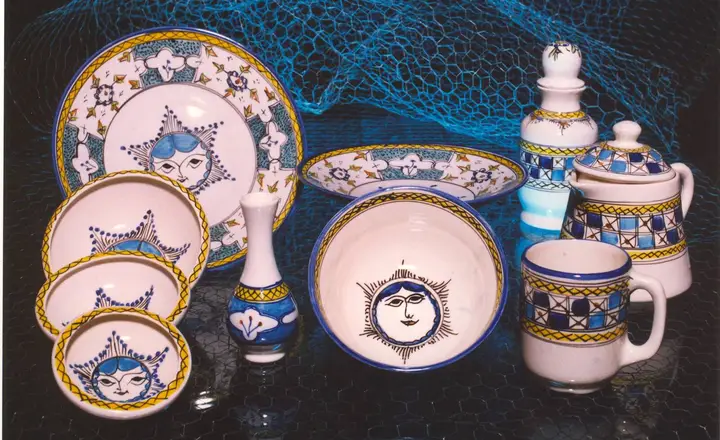
Golab (Rose Water) in Yazd: Essence of Fragrance and Tradition
Golab, also known as rose water, is a traditional Yazd product recognized for its alluring scent and several culinary and cosmetic applications. The city's Golab production is profoundly anchored in its culture, geography, and rose gardening traditions. Here's a closer look at Golab, Yazd:
Geographic Advantage:
- Yazd's climate and geographical location provide ideal conditions for cultivating Damask roses (Rosa × Damascena), which are prized for their aromatic petals.
- The region's arid climate and sunny days contribute to the high quality of the roses used in Golab production.
Rose Harvesting and Distillation:
- Golab production begins in late spring when the Damask roses are in full bloom.
- Local farmers carefully handpick rose petals, traditionally during the early morning hours when they are most fragrant.
- The freshly harvested petals are then distilled in traditional copper alembics (stills) to extract the fragrant rose oil and create rose water.
Culinary Delight:
- Golab is a key ingredient in Persian cuisine, adding a delicate floral essence to various dishes and desserts.
- It is commonly used in preparing traditional sweets like rosewater-scented ice cream (bastani sonnati), baklava, and faloodeh (a frozen dessert).
Traditional Uses:
- Golab has been used for centuries in Persian culture for its soothing and aromatic properties.
- It is often incorporated into skincare and beauty routines, believed to rejuvenate and refresh the skin.
Aromatic Symbolism:
- Golab holds cultural significance in Persian literature and poetry, often symbolizing love, purity, and beauty.
- Its fragrance is celebrated in Persian art and romantic symbolism.
Production Festivals:
- Yazd hosts annual Golab festivals, where visitors can witness the rose harvesting and distillation process.
- These festivals offer a unique cultural experience and the opportunity to purchase freshly distilled Golab.
Local Economy:
Golab production is a significant contributor to Yazd's economy, providing livelihoods to many local farmers and artisans.
Souvenirs and Gifts:
- Golab is a popular souvenir for travelers, available in various sizes and packaging options.
- Visitors can purchase bottles of pure rose water as a fragrant memento of their time in Yazd.
Golab is more than just a fragrant liquid; it embodies the essence of Yazd's culture, its rich tradition of rose cultivation, and its culinary and aromatic heritage. Whether used in Persian cuisine or cherished for its symbolic and therapeutic qualities, Golab is an integral part of Yazd's identity and an aromatic treasure worth exploring and savoring.
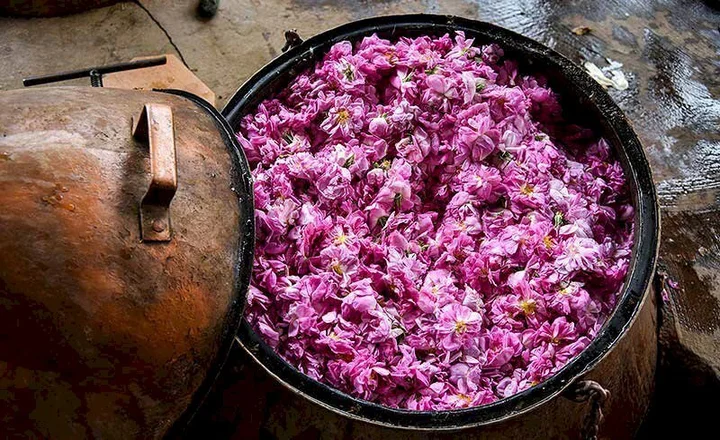
Copperware in Yazd: A Gleaming Tradition
Yazd is known for its magnificent copperware, which reflects centuries of workmanship and creative quality. The city's copper artists continue to make exquisite pieces that combine usefulness with sophisticated design. Here's a deeper look into the world of copperware in Yazd:
Traditional Craftsmanship:
- Copperware production in Yazd is a time-honored craft that has been passed down through generations.
- Artisans take immense pride in preserving traditional techniques and skills.
Copper Artisans:
- Skilled copper artisans, often working in family workshops, handcraft a wide range of copper items.
- These artisans are known for their meticulous attention to detail and commitment to quality.
Range of Products:
- Yazd's copperware encompasses an array of products, including trays, vases, teapots, bowls, platters, and decorative items.
- Each piece is carefully crafted, featuring elaborate designs, engravings, and often, a blend of copper with other metals like brass.
Ornate Designs:
- Copper items from Yazd are characterized by their intricate and ornate designs, which may include geometric patterns, arabesques, floral motifs, and calligraphy.
- These designs often reflect Persian culture, heritage, and artistic expression.
Versatility and Utility:
- While many copper pieces serve as decorative items, they are also functional and durable.
- Copper is an excellent conductor of heat, making copper pots and teapots popular choices in Persian kitchens.
Cultural Significance:
- Copperware holds cultural and historical significance in Iran, often gracing the tables of homes and traditional gatherings.
- It is also used in rituals and ceremonies, such as the preparation of tea for guests.
Preservation of Tradition:
- Yazd actively promotes and preserves its copperware heritage through workshops, exhibitions, and cultural programs.
- Visitors can witness the copper crafting process and interact with artisans in Yazd's workshops.
Souvenirs and Gifts:
- Copperware from Yazd makes for exceptional souvenirs and gifts. It showcases the city's rich cultural heritage and craftsmanship.
- Local markets and artisan shops offer a wide selection of copper items.
Customization and Artistry:
Some copper artisans in Yazd offer custom-made pieces, allowing customers to personalize their copperware with specific designs or engravings.
Copperware in Yazd is not merely functional; it represents an art form that continues to thrive in the modern world. The city's copper artisans uphold a tradition of excellence, producing pieces that are not only beautiful but also a testament to the enduring craftsmanship of Yazd.
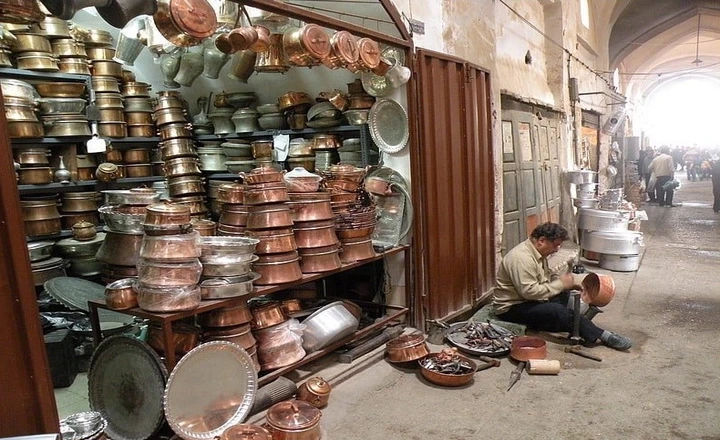
Traditional Textiles in Yazd: Threads of Heritage and Culture
Yazd has a long history of creating traditional textiles that represent the region's cultural variety and historical significance. These fabrics are not only practical but also have artistic and cultural significance. Here's a deeper look at traditional textiles in Yazd:
Diversity of Textiles:
- Traditional textiles from Yazd encompass a wide range of fabrics, including colorful fabrics, scarves, clothing items, and decorative textiles.
- These textiles are characterized by their vibrant colors, intricate patterns, and regional designs.
Regional Influence:
- Yazd's textiles often incorporate designs and motifs that are influenced by the region's cultural heritage.
- Different areas within Yazd may have their unique textile designs and traditions.
Yazdi Scarves:
- Yazdi scarves are a notable textile product, known for their distinctive designs and high-quality craftsmanship.
- These scarves are often worn as head coverings or accessories, and they are sought after for their unique patterns.
Traditional Dresses:
- Traditional clothing items, such as tunics, dresses, and scarves, are commonly made from Yazd's traditional textiles.
- These garments reflect the region's cultural identity and may feature traditional embroidery and embellishments.
Handwoven Fabrics:
- Many traditional textiles in Yazd are handwoven by skilled artisans, using techniques passed down through generations.
- Handwoven fabrics are prized for their quality and attention to detail.
Colorful Aesthetic:
Yazd's traditional textiles are celebrated for their vibrant and eye-catching color palettes, which often include bold combinations and intricate patterns.
Decorative Textiles:
- Traditional textiles are often used as decorative items in homes, such as wall hangings, tablecloths, and cushion covers.
- These textiles add a touch of cultural authenticity to interior spaces.
Souvenirs and Gifts:
- Visitors to Yazd frequently purchase traditional textiles as souvenirs or gifts for loved ones.
- They offer a tangible connection to the region's cultural heritage.
Cultural Events:
Yazd hosts cultural events and exhibitions that showcase traditional textiles, providing a platform for artisans to display their craftsmanship.
Preservation of Tradition:
Efforts are made to preserve and promote traditional textile production through workshops and cultural initiatives in Yazd.
Traditional textiles in Yazd are not only a reflection of the city's cultural diversity but also a testament to the skills and artistry of its textile artisans. These textiles continue to be a source of pride and cultural identity for the people of Yazd, and they provide visitors with a glimpse into the region's rich textile heritage.
Enamelware in Yazd: A Fusion of Color and Craftsmanship
Enamelware, recognized for its brilliant colors and durability, is a treasured part of Yazd's cultural legacy. This trade combines metalworking skills with enamel application expertise to create one-of-a-kind, practical objects. Here is a closer look at enamelware in Yazd.
Enamelware Production:
- Yazd's enamelware is primarily made from materials such as iron, copper, or aluminum, which are coated with a layer of vitreous enamel.
- The enamel is a glass-like substance that is heated and fused onto the metal surface, creating a smooth, glossy finish.
Colorful Creations:
- Enamelware from Yazd is celebrated for its vivid and eye-catching colors. Common hues include bright blues, deep reds, vibrant yellows, and shades of green.
- These colors are not only aesthetically pleasing but also serve functional purposes, as they make it easier to spot the enamelware in busy kitchens.
Range of Products:
- Yazd's enamelware encompasses a wide range of products, including teapots, coffee pots, trays, bowls, plates, and mugs.
- Each piece is handcrafted, often featuring intricate designs and patterns.
Decorative and Functional:
- Enamelware is decorative and functional, making it a versatile home addition.
- It is commonly used for serving tea, coffee, and traditional Persian dishes.
Cultural Significance:
- Enamelware has cultural significance in Iran, where it is often used during celebrations, gatherings, and ceremonies.
- Its durability and resistance to heat make it a practical choice for serving hot beverages and meals.
Artistic Expression:
- Many enamelware items are adorned with traditional Persian designs, such as floral motifs, geometric patterns, and calligraphy.
- These designs showcase the artisan's creativity and cultural influences.
Preservation of Tradition:
- Yazd is committed to preserving its enamelware tradition through workshops, exhibitions, and cultural initiatives.
- Visitors can explore these workshops and witness the enamelware-making process.
Souvenirs and Gifts:
- Enamelware from Yazd is a popular choice for travelers seeking unique souvenirs that embody both artistic craftsmanship and cultural heritage.
- Local markets and artisan shops offer a variety of enamelware items.
Everyday Use:
While enamelware is often associated with special occasions, it is also used in everyday life in Yazd, adding a touch of color and tradition to daily routines.
Enamelware in Yazd is not just kitchenware; it is a reflection of the city's rich artistic traditions and cultural identity. Its vibrant colors, intricate designs, and practical use continue to make it a beloved part of Yazd's heritage and a sought-after souvenir for visitors.
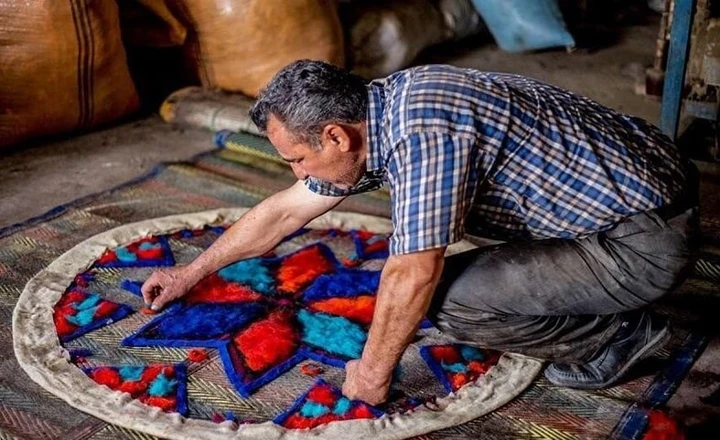
Ghotab and Yazdi Sweets: A Delectable Journey into Persian Confectionery
Yazd is well-known for its delightful confections, with Ghotab standing out as a favorite among locals and visitors alike. The city's confectionery legacy reflects its culinary innovation and utilization of regional ingredients. Here is a deeper look at Ghotab and Yazdi sweets.
Ghotab:
- Ghotab is a traditional sweet pastry that hails from Yazd and is known for its distinctive triangular shape.
- These pastries are typically made from a combination of ingredients, including almonds, sugar, rosewater, cardamom, and flour.
- The name "Ghotab" is derived from the Persian word for "corner," which refers to the pastry's characteristic triangular shape.
Preparation:
- Ghotab pastries are meticulously prepared by skilled bakers who craft each piece by hand.
- The dough is rolled out, filled with a mixture of ground almonds, sugar, and aromatic spices, and then folded into its triangular shape.
- The pastries are baked until they achieve a delicate, golden-brown hue.
Flavor Profile:
- Ghotab offers a delightful combination of flavors, with the sweetness of sugar complemented by the subtle nuttiness of almonds and the fragrance of cardamom and rosewater.
- The pastries are not overly sweet, making them a perfect treat to pair with tea or coffee.
Presentation:
- Ghotab pastries are often presented in decorative boxes or trays, making them suitable gifts and souvenirs.
- Their unique appearance and delicious taste make them a popular choice for special occasions and celebrations.
Yazdi Sweets:
- In addition to Ghotab, Yazd is known for a variety of other sweets and confections.
- These sweets include Sohan (a saffron and rosewater brittle), Baklava, Ranginak (date-filled cookies), and Shirini Yazdi (Yazdi sweets).
Cultural Significance:
- Yazdi sweets, including Ghotab, have cultural significance and are often served during festive occasions, weddings, and family gatherings.
- They are considered an expression of hospitality and celebration.
Souvenirs and Gifts:
- Visitors to Yazd frequently purchase boxes of Ghotab and other Yazdi sweets as souvenirs or gifts for loved ones.
- These sweets allow travelers to take a piece of Yazd's culinary heritage home with them.
Culinary Heritage:
Ghotab and Yazdi's sweets are a reflection of the city's culinary heritage and the skilled artisans who continue to uphold these traditions.
Culinary Experiences:
- When in Yazd, visitors can explore local bakeries and sweet shops to savor the flavors of Ghotab and other traditional sweets.
- Many establishments offer samples and freshly baked treats.
Ghotab and Yazdi's sweets are not just delicious treats; they are a window into Yazd's culinary culture and a delightful way to experience the city's rich traditions and warm hospitality.
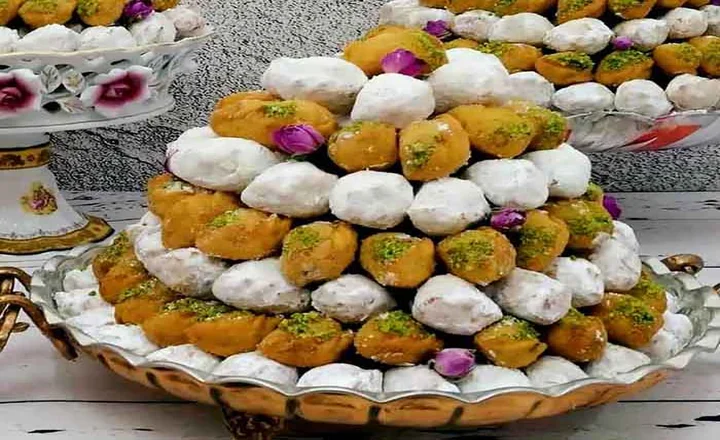
Miniature Paintings in Yazd: A Window into Persian Artistry
Miniature painting is a beloved art form that plays an important role in Yazd's cultural legacy. These elaborate, precise artworks have a long history in Persian culture, and Yazd is home to skilled miniature painters who continue to carry on the practice. Here is a closer look at tiny artworks in Yazd.
Historical Roots:
- Miniature painting has a long history in Persia, dating back to the medieval period when Persian rulers and scholars patronized the arts.
- These paintings often adorned manuscripts, illustrating stories, poetry, and historical texts.
Persian Miniature Painting:
- Persian miniature painting is characterized by its intricate details, vibrant colors, and meticulous craftsmanship.
- It typically features depictions of nature, courtly life, epic tales, and mythological figures.
Yazd's Miniature Artists:
- Yazd is known for its talented miniature painters who create exquisite artworks inspired by Persian literature, history, and culture.
- These artists often train for years to perfect their skills and develop their unique styles.
Techniques and Materials:
- Miniature painters in Yazd employ traditional techniques, using brushes with fine bristles and pigments made from natural sources.
- The process involves precision and patience, with tiny, intricate brushstrokes creating elaborate compositions.
Subjects and Themes:
- Yazd's miniature paintings often feature themes from Persian literature, such as the Shahnameh (Book of Kings) and the works of renowned poets like Rumi and Hafez.
- They may also depict historical events, religious narratives, and scenes from everyday life.
Iconography and Symbolism:
- Persian miniature paintings often incorporate symbols and motifs with cultural and spiritual significance, adding depth to the artworks.
- These symbols may convey messages of love, spirituality, and enlightenment.
Preservation of Tradition:
- Efforts are made to preserve and promote the tradition of miniature painting in Yazd through workshops, exhibitions, and cultural programs.
- Visitors can explore art studios and galleries to witness the miniature painting process.
Collectible Art:
- Miniature paintings from Yazd are highly regarded as collectible art pieces, appreciated by art enthusiasts and collectors worldwide.
- They are often framed or presented as standalone artworks.
Souvenirs and Gifts:
Travelers to Yazd can purchase miniature paintings as unique souvenirs or gifts, providing a tangible connection to Persian culture and artistry.
Miniature paintings in Yazd are a testament to the city's commitment to preserving its artistic heritage and showcasing the talents of its miniature artists. These intricate artworks invite viewers to immerse themselves in the world of Persian art, where every brushstroke tells a story and every color evokes emotion.
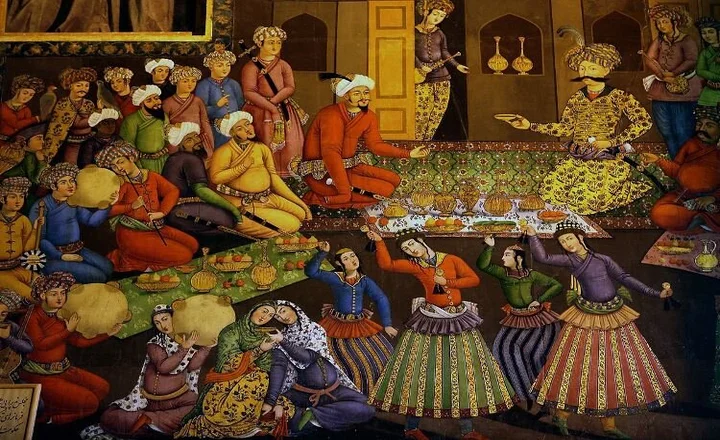
Read More:✔️ The Best Hotels and Hostels in Yazd | Yazd Accommodation Guide
Jewelry in Yazd: Crafting Elegance with a Glimpse of History
Jewellery has a significant position in Yazd's cultural legacy, as artists masterfully produce stunning items that combine tradition and modern aesthetics. The city's jewelry-making legacy reflects the area's long history and admiration for high craftsmanship. Here's a closer look at the jewelry in Yazd.
Artisanal Excellence:
- Yazd boasts a community of skilled jewelry artisans who create unique and intricately designed pieces.
- The craftsmanship reflects both traditional techniques and contemporary design sensibilities.
Materials and Gemstones:
- Yazd's jewelers work with a variety of materials, including gold, silver, copper, and brass.
- Gemstones such as turquoise, agate, carnelian, and turquoise are often used to add color and elegance to jewelry pieces.
Traditional Designs:
- Many Yazdi jewelry pieces feature traditional Persian designs and motifs, such as paisley patterns, floral motifs, and calligraphy.
- These designs often carry cultural and historical significance.
Filigree and Engraving:
- Filigree work and intricate engraving are common techniques used in Yazdi jewelry.
- These techniques add texture and depth to pieces, making them visually captivating.
Symbolism:
- Some pieces of Yazdi jewelry may incorporate symbols and motifs with cultural or spiritual significance, such as Faravahar, the Zoroastrian symbol.
- Jewelry often carries personal and symbolic meaning for wearers.
Customization:
- Many jewelers in Yazd offer customization services, allowing customers to create personalized pieces to suit their tastes and preferences.
- This bespoke approach ensures that jewelry becomes a meaningful and cherished possession.
Bridal Jewelry:
- Yazd is known for its exquisite bridal jewelry sets, which are often adorned with gemstones and intricate designs.
- These sets are an integral part of Persian wedding traditions.
Preservation of Craftsmanship:
- Yazd takes pride in preserving its jewelry-making traditions through apprenticeships, workshops, and cultural initiatives.
- Visitors can explore jewelry workshops to witness the creation of these stunning pieces.
Souvenirs and Gifts:
- Yazd's jewelry is a popular choice for travelers seeking unique souvenirs and gifts that encapsulate the city's culture and artistry.
- Jewelry shops offer a wide selection of pieces, from rings and necklaces to earrings and bracelets.
Cultural Significance:
- Jewelry in Yazd carries cultural significance, often being passed down through generations as heirlooms.
- It is worn during special occasions, celebrations, and religious ceremonies.
Yazd's jewelry is more than adornment; it's a reflection of the city's craftsmanship, culture, and appreciation for the artistry of fine jewelry. Whether as a symbol of love, a statement piece, or a treasured memento, Yazdi jewelry captures the essence of Persian elegance and tradition.
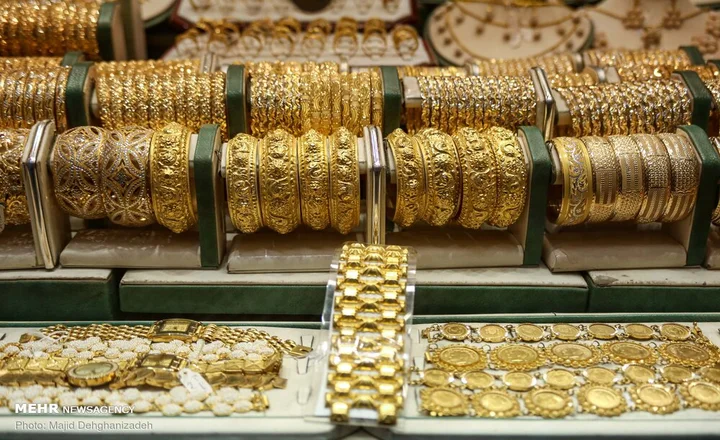
The woodwork in Yazd: Craftsmanship and Artistry in Timber
Yazd's woodwork tradition is a testament to the city's rich artistic heritage and architectural ingenuity. The intricate designs and skilled craftsmanship that define Yazdi woodwork have been an integral part of the city's history for centuries. Here's a closer look at the woodwork in Yazd:
Architectural Elements:
- Yazd's woodworkers are known for creating beautifully carved wooden architectural elements, including doors, windows, screens, and balcony railings.
- These elements often feature intricate geometric patterns, floral motifs, and calligraphy.
Traditional Techniques:
- The woodwork in Yazd relies on traditional techniques passed down through generations.
- Artisans use hand tools and woodworking skills to create detailed carvings and designs.
Wooden Latticework (Nagashi):
- Nagashi is a distinctive feature of Yazdi architecture, consisting of finely carved wooden latticework used in windows, balconies, and screens.
- Nagashi allows for privacy while allowing airflow and natural light, making it an essential architectural element in Yazd's desert climate.
Wooden Furniture:
- Yazd's woodworkers also create exquisite wooden furniture, including tables, chairs, cabinets, and decorative items.
- These pieces showcase the artistry and functionality of Yazdi woodwork.
Decorative Boxes and Panels:
- Wooden boxes and decorative panels adorned with intricate carvings are a hallmark of Yazdi woodwork.
- These items are often used for storage and decorative purposes.
Cultural Significance:
- Woodwork has cultural significance in Yazd and is often incorporated into the city's historic buildings and traditional homes.
- It adds character and beauty to Yazdi architecture.
Preservation of Tradition:
- Yazd takes great care to preserve its woodwork tradition through apprenticeships and workshops.
- Artisans pass on their knowledge and skills to the next generation.
Decorative Arts:
- Yazdi woodwork is considered a form of decorative art, combining both functionality and aesthetics.
- The wooden carvings often depict intricate patterns, religious symbols, and cultural motifs.
Souvenirs and Collectibles:
- Visitors to Yazd can find wooden decorative items and furniture as souvenirs.
- These pieces make for unique and culturally rich gifts and collectibles.
Architectural Heritage:
- Yazd's architectural heritage is celebrated for its use of woodwork, which contributes to the city's distinctive charm.
- Visitors can admire wooden elements in historic structures and buildings throughout the city.
Yazd's woodwork tradition is a living testament to the city's commitment to preserving its cultural heritage and showcasing the artistic talents of its woodworkers. It adds an extra layer of beauty and intricacy to Yazdi architecture, making it a captivating destination for those interested in exploring the region's rich traditions and craftsmanship.
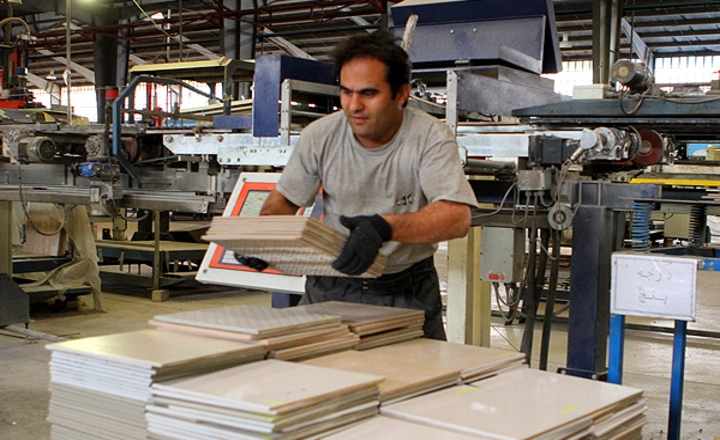
Khatamkari in Yazd: The Intricate Art of Marquetry
Khatamkari is a remarkable form of marquetry that finds its roots in Persia, and Yazd has been a hub for this intricate craft for centuries. This art form involves creating geometric patterns and intricate designs by skillfully inlaying small pieces of wood, bone, metal, and other materials into a wooden surface. Here's a deeper look at Khatamkari in Yazd:
Historical Significance:
- Khatamkari has a rich historical legacy in Yazd and throughout Iran, dating back to ancient times.
- The art of Khatamkari was highly prized and often associated with royalty and nobility.
Materials and Technique:
- Khatamkari artisans in Yazd use a variety of materials, including wood, bone, brass, copper, and camel bone.
- The process involves meticulously cutting and shaping these materials into tiny triangles, squares, and rhombuses before inlaying them onto the wooden surface.
Intricate Patterns:
- Khatamkari is renowned for its intricate geometric patterns, including stars, polygons, and floral motifs.
- The precision and attention to detail required for these patterns are a testament to the skill of Yazdi artisans.
Wood Selection:
The choice of wood is crucial in Khatamkari, with walnut, rosewood, and ebony being popular choices for their rich colors and grain patterns.
Finishing and Polishing:
- After inlaying the pieces, the surface is sanded, polished, and finished to achieve a smooth and glossy appearance.
- The final result is a stunning piece of art that showcases the artistry and craftsmanship of Yazdi Khatamkari.
Traditional and Modern Pieces:
- Khatamkari artisans in Yazd create a wide range of items, from decorative boxes and frames to chessboards, backgammon sets, and jewelry.
- While traditional designs are cherished, modern interpretations and adaptations of Khatamkari are also crafted to cater to contemporary tastes.
Cultural Significance:
- Khatamkari has deep cultural significance and is often seen as a representation of Persian artistry and heritage.
- It is a symbol of patience, precision, and dedication to craft.
Preservation of Tradition:
- Yazd takes pride in preserving the tradition of Khatamkari through workshops, training programs, and cultural initiatives.
- These efforts ensure that the art form continues to thrive in the city.
Souvenirs and Collectibles:
- Khatamkari pieces from Yazd are highly sought after by tourists and collectors as unique and culturally rich souvenirs.
- They make for exquisite gifts and decorative items.
Artistry on Display:
- Visitors to Yazd can explore Khatamkari workshops and galleries to witness the intricate process of creating these masterpieces.
- The city's markets and bazaars also offer a wide selection of Khatamkari items.
Khatamkari in Yazd represents the pinnacle of precision and artistry, combining traditional techniques with timeless design. It not only adds a touch of elegance to interior decor but also serves as a beautiful reminder of Yazd's cultural heritage and the talent of its artisans.
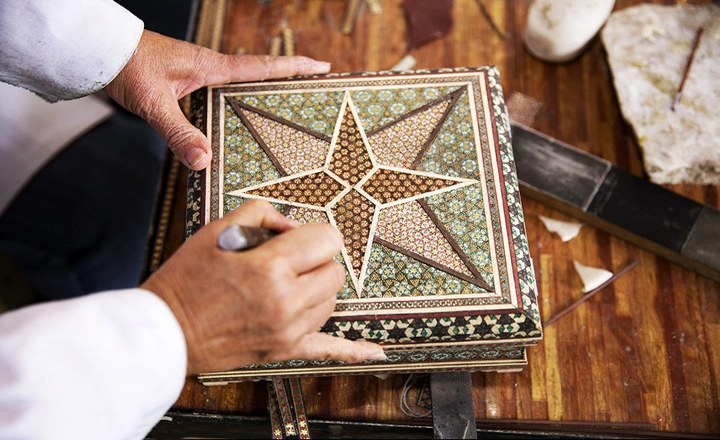
Zoroastrian Symbols in Yazd: Preserving an Ancient Faith
Yazd is home to one of the largest Zoroastrian communities in Iran, and the city is deeply intertwined with the history and heritage of this ancient faith. Zoroastrianism, one of the world's oldest religions, is marked by its distinct symbols, and Yazd serves as a custodian of these sacred emblems. Here's a closer look at Zoroastrian symbols in Yazd:
Faravahar (Fravashi):
- The Faravahar, also known as the Fravashi, is perhaps the most recognized symbol of Zoroastrianism.
- It represents the divine or guardian spirit and is depicted as a winged figure with a ring in one hand and a staff or scepter in the other.
Significance:
- The Faravahar symbolizes the Zoroastrian concept of the eternal soul and the choice between good and evil.
- It serves as a reminder of the individual's moral and ethical responsibilities.
Presence in Yazd:
- In Yazd, you can find the Faravahar symbol prominently displayed in various places, including Zoroastrian fire temples, homes, and cultural centers.
- It is a symbol of pride and identity for the local Zoroastrian community.
Fire Temples:
- Yazd is famous for its Zoroastrian fire temples, where the sacred Atash Behram (Victorious Fire) is preserved.
- The Faravahar is often seen adorning the entrance to these temples.
Atash Behram:
- The Atash Behram is the highest grade of fire in Zoroastrianism and is considered the most sacred.
- Yazd's Atash Behram is one of the nine in the world, making it a significant pilgrimage site for Zoroastrians.
Cultural Festivals:
- Yazd hosts various Zoroastrian festivals throughout the year, during which Zoroastrians gather to celebrate their faith and heritage.
- The Faravahar symbol is prominently featured during these festivities.
Tower of Silence:
- The Tower of Silence (Dakhma) is an ancient Zoroastrian burial site located on the outskirts of Yazd.
- It is a circular, raised platform where the deceased are placed to be exposed to the elements and scavenger birds, following the Zoroastrian practice of sky burial.
Cultural Heritage:
- Zoroastrianism has left an indelible mark on Yazd's cultural heritage, influencing architecture, art, and traditions.
- The presence of Zoroastrian symbols is a testament to the enduring legacy of this ancient faith in the city.
Coexistence:
- Yazd is known for its religious diversity and harmonious coexistence of Zoroastrians, Muslims, and other religious communities.
- This tolerance and acceptance contribute to the unique cultural fabric of the city.
Symbol of Unity:
The Faravahar symbolizes unity among Zoroastrians and serves as a unifying emblem that connects the community to its roots and values.
Zoroastrian symbols, particularly the Faravahar, play a significant role in the cultural and religious landscape of Yazd. They offer a glimpse into the deep-rooted beliefs and traditions of the Zoroastrian community and add to the city's cultural richness and diversity.
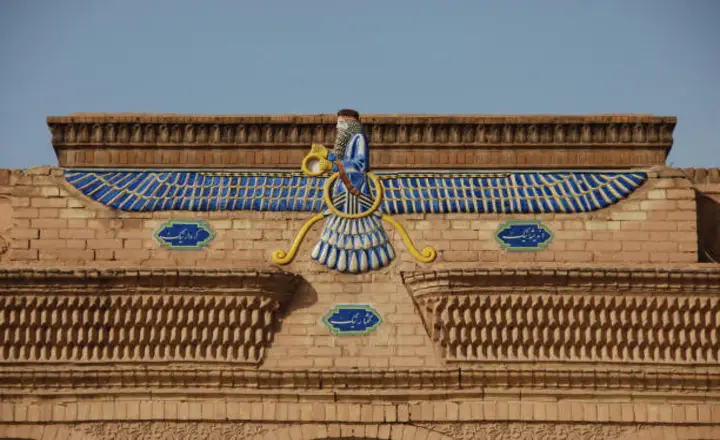
Last word
Yazd, known for its vibrant culture and rich heritage, offers a variety of unique souvenirs and handicrafts. From intricate Khatamkari marquetry to symbols of Zoroastrianism, each item embodies Yazd's history and craftsmanship. Exploring the city's bazaars and workshops, you'll find not just unique treasures but also a connection to Yazd's essence—a place where tradition and artistry thrive. When you leave, take with you more than souvenirs: carry a piece of Yazd's soul, a memory of its culture, and a reminder of its warm hospitality.
Frequently Asked Questions about Souvenirs and Handicrafts in Yazd
Here are some commonly asked questions about the souvenirs and handicrafts you can purchase in Yazd.
What are the best items to buy in Yazd as gifts?
Some of the best gifts from Yazd include Termeh textiles, Persian carpets, copperware, Khatamkari items, and Yazdi sweets like Ghotab. These items offer a beautiful representation of Yazd’s culture and craftsmanship.
Where can I buy traditional handicrafts in Yazd?
Traditional handicrafts in Yazd can be found in local bazaars, specialty shops, and artisan workshops. Popular spots include the old bazaar, where you can buy items such as carpets, pottery, textiles, and copperware.
What is Termeh in Yazd and why is it so special?
Termeh is a handwoven textile, known for its complex patterns and bright colors. It has a long history in Persian culture, especially in Yazd, where skilled artisans continue the tradition of creating these beautiful fabrics.
How are Persian carpets from Yazd different from other regions?
Persian carpets from Yazd are known for their fine craftsmanship and intricate designs, such as floral motifs, geometric patterns, and medallions. The carpets are made from high-quality wool and silk, resulting in luxurious textures.
What makes Yazd's copperware unique?
Yazd's copperware is renowned for its intricate designs and durability. The pieces, which include trays, vases, and teapots, often feature elaborate patterns and are handcrafted by skilled artisans in the city.
Can I buy Khatamkari (marquetry) in Yazd?
Yes, Khatamkari is a distinctive form of marquetry found in Yazd. This intricate art involves inlaying wood, bone, and metal into wooden surfaces to create geometric patterns. These pieces make for exquisite and culturally rich souvenirs.
What is the cultural significance of the Faravahar symbol in Yazd?
The Faravahar symbol, representing the Zoroastrian concept of the eternal soul, is prominently featured in Yazd. It serves as a reminder of the individual's moral and ethical responsibilities and can be found in Zoroastrian fire temples and cultural centers.
Where can I find silk and velvet fabrics in Yazd?
Silk and velvet fabrics are widely available in Yazd, with specialty shops and markets offering luxurious items such as scarves, clothing, and decorative textiles. These fabrics are known for their opulence and elegant designs.
What is Ghotab and where can I buy it in Yazd?
Ghotab is a traditional sweet pastry from Yazd, known for its distinctive triangular shape. It’s made from almonds, sugar, rosewater, and cardamom. You can find Ghotab in local bakeries and sweet shops throughout Yazd.
What is the best time of year to buy handicrafts in Yazd?
The best time to buy handicrafts in Yazd is during the cooler months, from October to April. During these months, the weather is pleasant, making it ideal for exploring the markets and local artisan workshops.
Are there any specific Zoroastrian symbols that I can purchase in Yazd?
Yes, Zoroastrian symbols, particularly the Faravahar, are commonly found in Yazd. These symbols are often seen in jewelry, decorative items, and spiritual artifacts, making them significant souvenirs of Yazd’s cultural and religious heritage.
How can I ensure the authenticity of traditional handicrafts in Yazd?
To ensure authenticity, it’s best to buy traditional handicrafts directly from established shops or artisan workshops in Yazd. Look for certificates of authenticity or ask the shopkeeper about the craftsmanship and history behind each item.

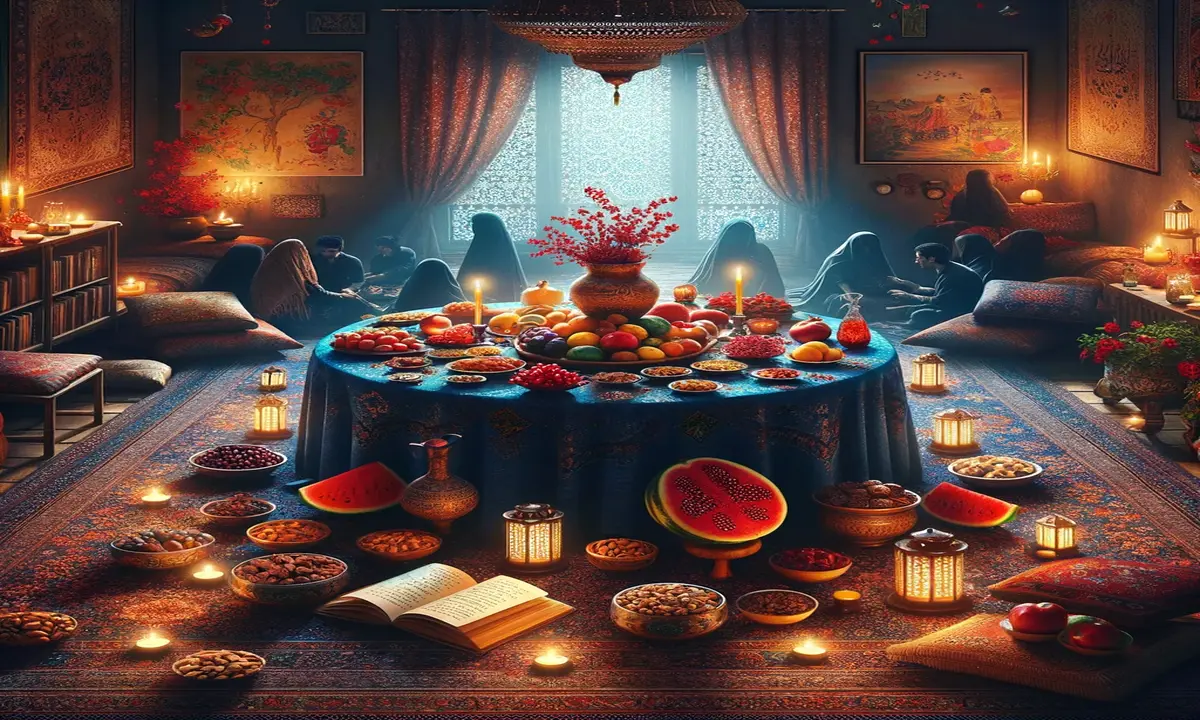
.webp)
